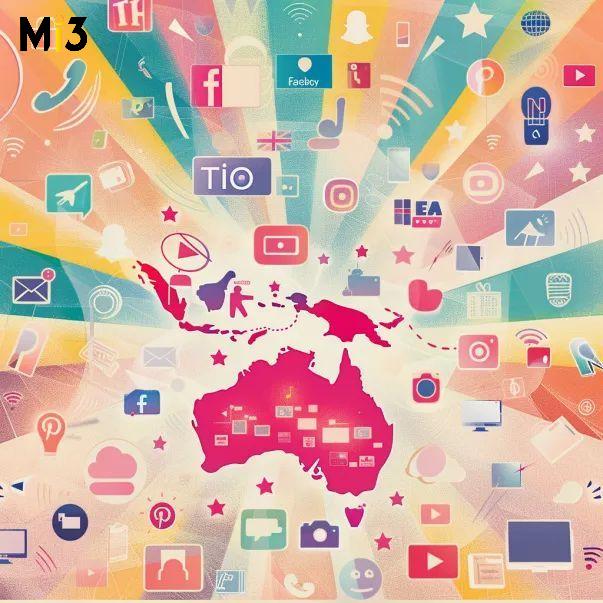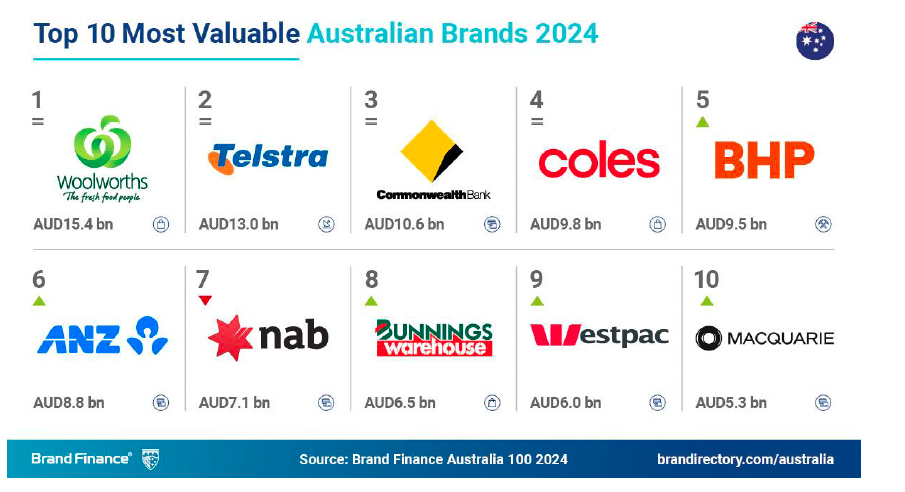Scorched search: Why AI requires a rapid content rewrite – and how it happened so quickly, the experts never saw it coming

What you need to know:
-
WPP is five years into a longitudinal examination of strategic forces in advertising, and at the halfway mark, one thing is clear: while none of the original global ad leaders surveyed in the weeks before Covid demonstrated any inking of the likely impact of AI they are making up for it in spades. It’s a key through line in the study.
-
The zero-click era is here: Mindshare CEO Maria Grivas warns that brands are seeing sharp declines in click-throughs from AI tools. Cloudflare data shows how brutally efficient traditional Google search is at driving leads to sites, compared to ChatGPT and Anthropic, whose results differ by orders of magnitude.
-
One solution? Forget SEO tricks, aim for visibility inside the answer. Optimise for inclusion in LLM outputs, not search rankings. Grivas’ playbook: hyper-personalised content, standalone structure, and brand mentions over backlinks.
-
Know your LLM, and your audience’s: Each AI model (ChatGPT, Claude, Gemini) pulls from different datasets and partners, producing wildly different outputs. Brands must prioritise LLMs their customers actually use. But that means they have to know that in the first place.
-
Bot-to-bot commerce is coming: Grivas argues that intelligent agents will soon negotiate, triage, and personalise services directly. Marketers must design for machine legibility – clear metadata, pricing, and transparent policies.
With a normal search on Google, for every four and a half times Google hits your website, you will have one referral to your website. The numbers for Chat GPT are 881 to one. For Anthropic, it's 39,600 to one.
Heavy messing
About once a week, Steven Perissinotto’s team fields a call from a confused and occasionally annoyed customer wanting to understand the communications they have just received from Vetshop. It’s Australia’s largest independent vet-owned and operated online retailer for pet supplies and pet health products. Perissinotto’s a director at the firm he co-founded at the tail end of the original Dotcom boom.
“Yahoo Mail insists on replacing the subject line with a generative AI subject line telling people their dog food is on the way, and they contact us and go, ‘we didn’t order dog food from you ‘ says Perissinotto.
It’s the kind of half-annoying, half-amusing complication Vetshop has come to expect in a generative world where algorithms often decide they know your business better than you do.
But Perissinotto also knows there is a much more serious game afoot, and that generative upheavals will be central to how he does business, starting with search.
“Our view is that generative search will replace traditional search, if not completely, then substantially. And Google’s rollout giving its AI-generated answer before its results virtually guarantees that,” he says.
For now, Vetshop’s traditional search numbers are largely holding up and still outperforming its newer generative cousin. But the newcomer is nonetheless starting to provide headaches, if not sales leads.
“We have identified a critical problem already, and that’s if you ask ChatGPT today, where is the best place to buy a Bravecto – that’s one of the pet brands that we sell in Australia – it gives you four or five options. Sometimes it gives us, sometimes it doesn’t. But when it doesn’t, you just don’t exist. At least on traditional search you might at least get a go on the second page of results.”
Worse, the generative search engines get important details wrong. Take NexGard, a brand of monthly, beef-flavoured chewable parasiticides that protect dogs against fleas, ticks, and mites. “In the US you need a prescription. You don’t in Australia,” he says. That local nuance is not always reflected, impacting sales.
Irregular apocalypse
Search has underpinned Vetshop and thousands like it – and, despite price inflation, has been the most bankable piece of the marketing budget for the last two decades.
Hence upending the predictability of search spending is a huge change.
It’s also an example of the kind of unexpected upheaval that dozens of global advertising experts didn’t see coming back in 2020, when WPP first put together its Advertising 2030 survey. Back then, environmental impact was forecast to be as important in ad dollar allocation as price, and the metaverse was taken seriously.
WPP’s latest study inputs (covered here) suggests that while AI’s influence will be profound, many anticipated revolutionary shifts may likewise take longer to materialise, not happen as predicted, or not happen at all. Based on insights from more than 60 industry experts, the report highlights a future where advertising remains a critical economic pillar, adapting to technological advancements rather than being fundamentally reshaped by them.
But right now, search impacts are becoming clear – and for Maria Grivas, Mindshare Australia CEO, stories like Perissinotto’s are an increasingly common proof point about how quickly AI is rewriting the advertising rule book.
“What we are seeing right now is the amount of discovery that has already moved to LLMs and the reduction of search traffic or web traffic direct to your site from people using LLMs.”
Perissinotto may not be seeing seismic traffic reductions yet, but if Grivas’ telling is right, he likely soon will – and that’s certainly his expectation.
Per Grivas, “The idea of zero-click traffic is already quite prevalent”.
She cites figures from Cloudflare, which has visibility across about a fifth of the world’s web traffic: “With a normal search on Google, for every four and a half times Google hits your website, you will have one referral to your website. The numbers for Chat GPT are 881 to one. For Anthropic, it’s 39,600 to one.”
Grivas told Mi3, “You can start to see the scale at which the use of LLMs is going to impact direct engagement with your brand environment.”
Subtle shift in emphasis
With the kinds of clickthroughs Cloudflare is reporting, it’s clear LLM search is a different ballgame, requiring both a rethink, and potentially, a rewrite.
“What I’d really encourage marketers to consider is how discoverable they are within LLMs, how they’re structuring content, and how their brand is represented, both to agents and to humans. Prioritising how they show up in those contexts is really the next frontier of discoverability,” says Grivas.
It’s a message that’s resonating more loudly in some parts of the market than others.
B2B marketers, like HubSpot’s Senior Director of Growth Marketing Aja Frost, have invested significant resources understanding the new search environment.
Speaking to Mi3 at the her firm’s recent Inbound event in San Francisco, Frost said, “Visibility is the North Star now.” Forget visits and click-throughs – with 60 per cent of Google searches ending without a click, and generative AI tools like ChatGPT, Claude, Gemini and Perplexity shaping decisions in-session, marketers must optimise for inclusion inside the answer, not just on the results page, she suggests.
But that’s also where things get complicated.
“Each LLM has its own system prompts, it trains on its own unique datasets,” said Frost. “They each have unique media relationships.” OpenAI, for instance, is partnered with Reddit, but not with the New York Times. Claude has built a reputation with creators. Gemini leans into Google’s own universe. Result: the same query can yield radically different answers, depending on the engine — and the implicit values embedded in its data sources.
Her advice for marketers: “I would recommend that brands focus on the LLMs where they see the most usage for their audience,” said Frost. That means understanding where your customers are already engaging, and doubling down.
After months of experimentation, Frost says she has developed a three-part playbook for AI-era visibility: Hyper-personalised content, structured formats, since, in her words.“AI engines are very lazy readers… every section should stand on its own” and a focus on brand mentions over backlinks: “AI engines care about how many positive shout-outs your brand is getting across the web.”
Bot-on-bot action
While Frost and Perisinotta are in the thick of the search conversation, Grivas highlights another key insight from the most recent Advertising in 2030 study – that’s the argument that we are moving into an era when brands and consumer bots will dance together directly, irrespective of whether human chaperones are present.
It’s an idea that provokes debate. Last week ex-Publicis, Havas, IPG exec turned ‘futurist’ Tom Goodwin took a metaphorical club to the idea at ADMA’s global forum.
While Deloitte Digital may see a $200bn opportunity for rewiring the web for conversational and bot driven commerce, Goodwin has his doubts. “There is a suggestion that the entire internet will somehow vanish and there will be a new internet which is read by bots … that will automatically make purchase decisions for me. I personally don’t think we are going to go through that world, but it’s an interesting thing to think about.”
Grivas disagrees: “The bot-to-bot thing is coming faster than people realise.”
Marketers who believe it’s a conversation best left for later are going to be left behind, she warns.
“So when you’re thinking about the role LLMs are playing in how your brand gets discovered, and in how it’s selected as consumers delegate decisions to their personal agents, that should be front and centre on every marketer’s agenda right now.“
The executives surveyed for the report expect a material share of brand-to-consumer engagement to happen bot-to-bot.
It’s a world where consumers will field intelligent agents that retrieve offers, triage service and screen intrusions. Brands will deploy agents that negotiate service recovery, coordinate delivery and personalise content. In many categories, this is simply efficient. It removes latency and strips out the ritualised bad experiences that have defined contact centres for three decades. In premium categories, human service still differentiates, but even there, agents will handle the dull and the routine so people can do what people do best.
But it might actually happen the other way around – executives anticipate consumers deputising their own agents to screen out noise, i.e. bot on bot countermeasures.
As Ford’s Rahul Gautam puts it, “Consumers would like to stay in control and make choices. Virtual representatives would be used more to block unwanted engagements from brands.”
If it is truly to happen, progress will need to be material. As Mi3 reported yesterday, Anthropic’s CEO Dario Amodei gave a real example of current limitations. Claudius, an internal AI agent designed to run a vending machine at the LLM vendor, proved adept at stock management, including sourcing exotic items, including bizarrely a giant cube of solid tungsten, and it repriced inventory like a supply chain pro. But when buyers put it under pressure on price, it folded like a cheap Temu tent. Agentic, he conceded, currently has only a limited form of agency.
Of course there are more strategic issues than whether Claude (or Claudius) can be bullied.
If the consumer of 2030 is fronted by a gatekeeping agent, then visibility shifts from the screen to the protocol layer. Becoming legible to agents becomes a core marketing task. That means clean product metadata, interpretable pricing, transparent policies and service level guarantees machines can validate. It also means designing for refusal. Consumer agents will block interruptive pitches by default. Brands that rely on brute force frequency will find themselves filtered out by design.
The ability for a human to identify a consumer insight or truth, which then leads to the kind of content concept you'd want to create to address that, is still very much a human-driven process.
On the vexed question of AI and creative, Grivas steers a middle course.
“The report suggests that marketers and experts believe AI should take a greater role in the production side of content generation, not in ideation and concepting, which I wholeheartedly agree with. I think the ability for a human to identify a consumer insight or truth, which then leads to the kind of content concept you’d want to create to address that, is still very much a human-driven process. You might augment some of it, but it’s fundamentally human.”





